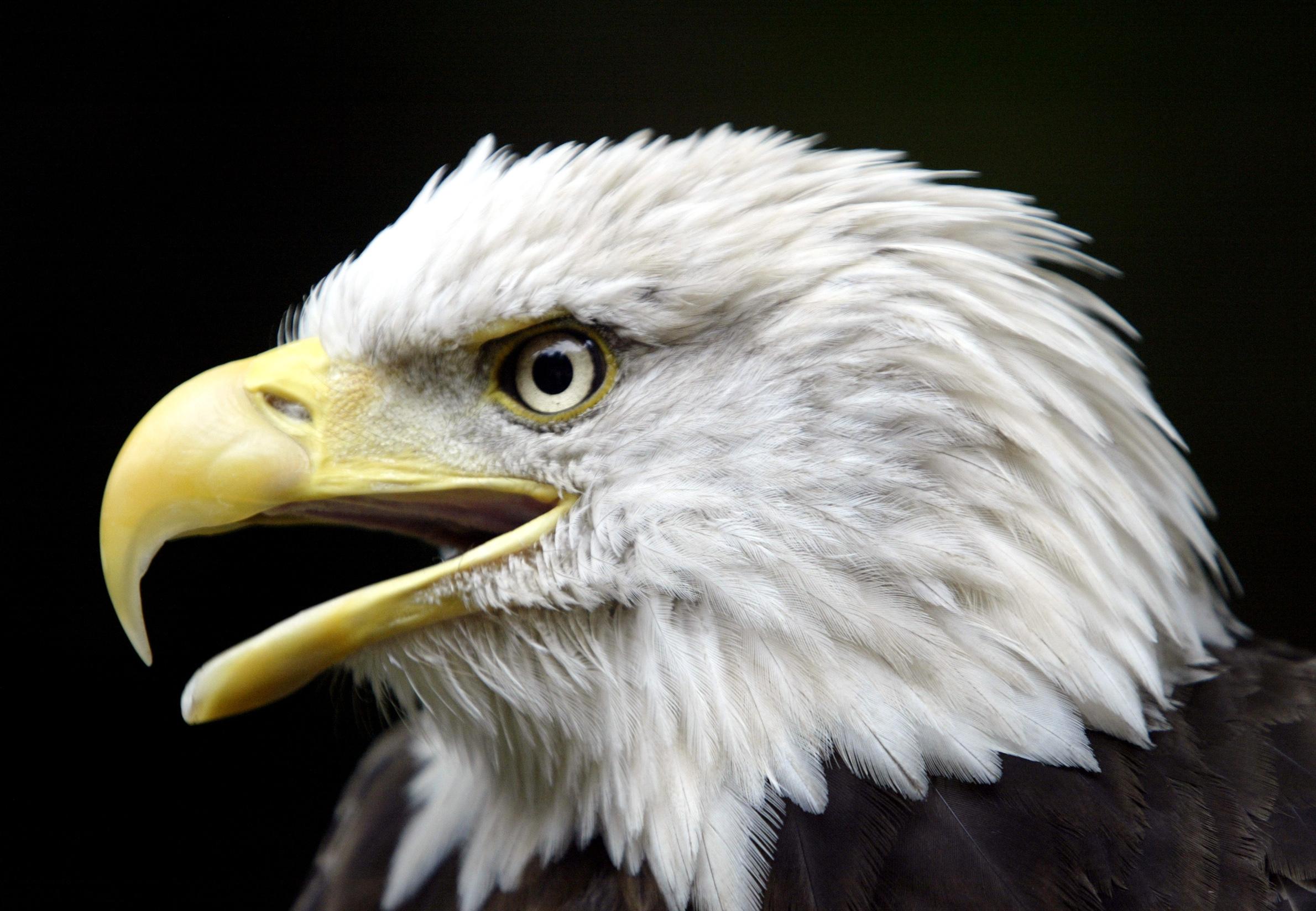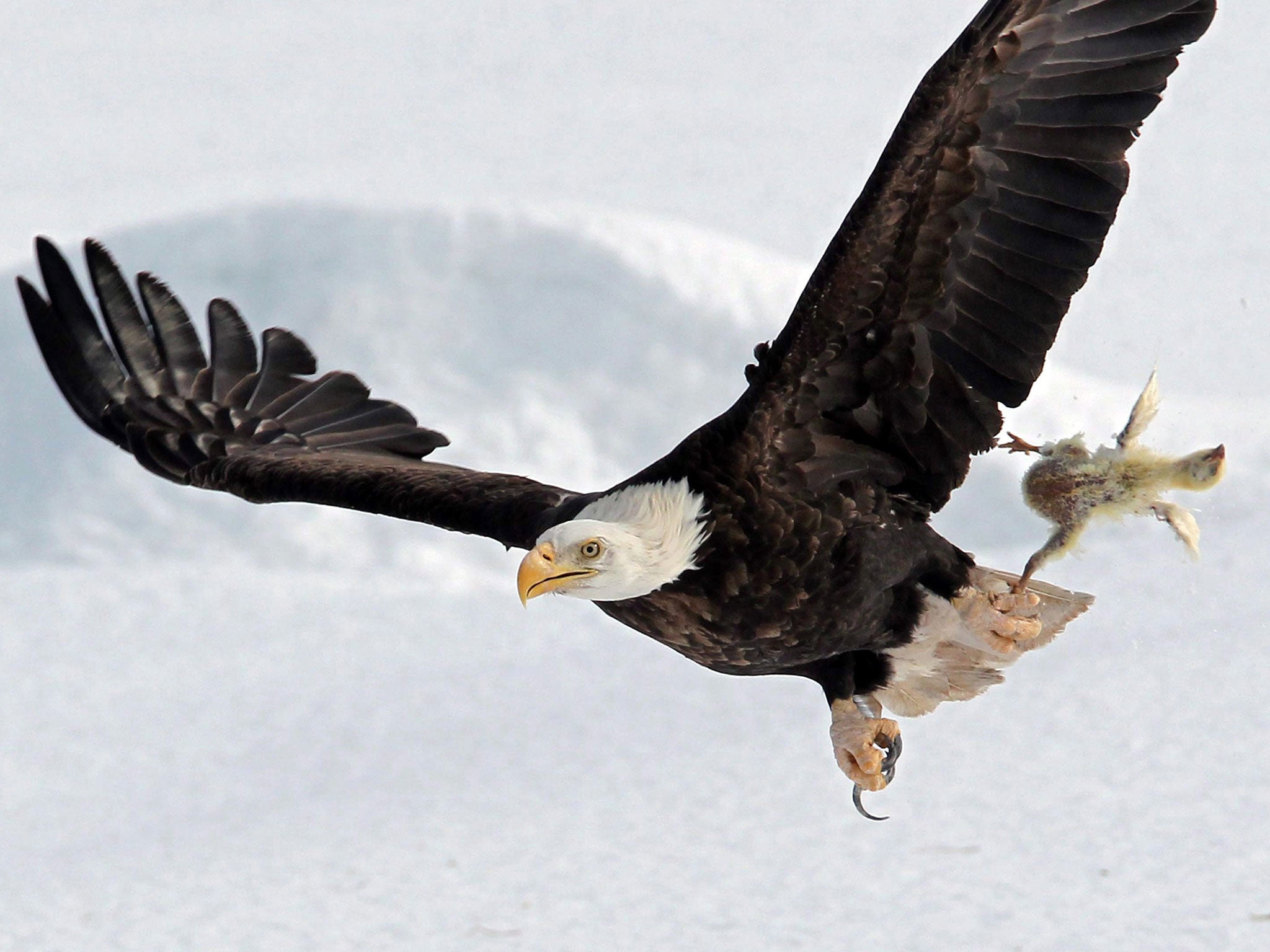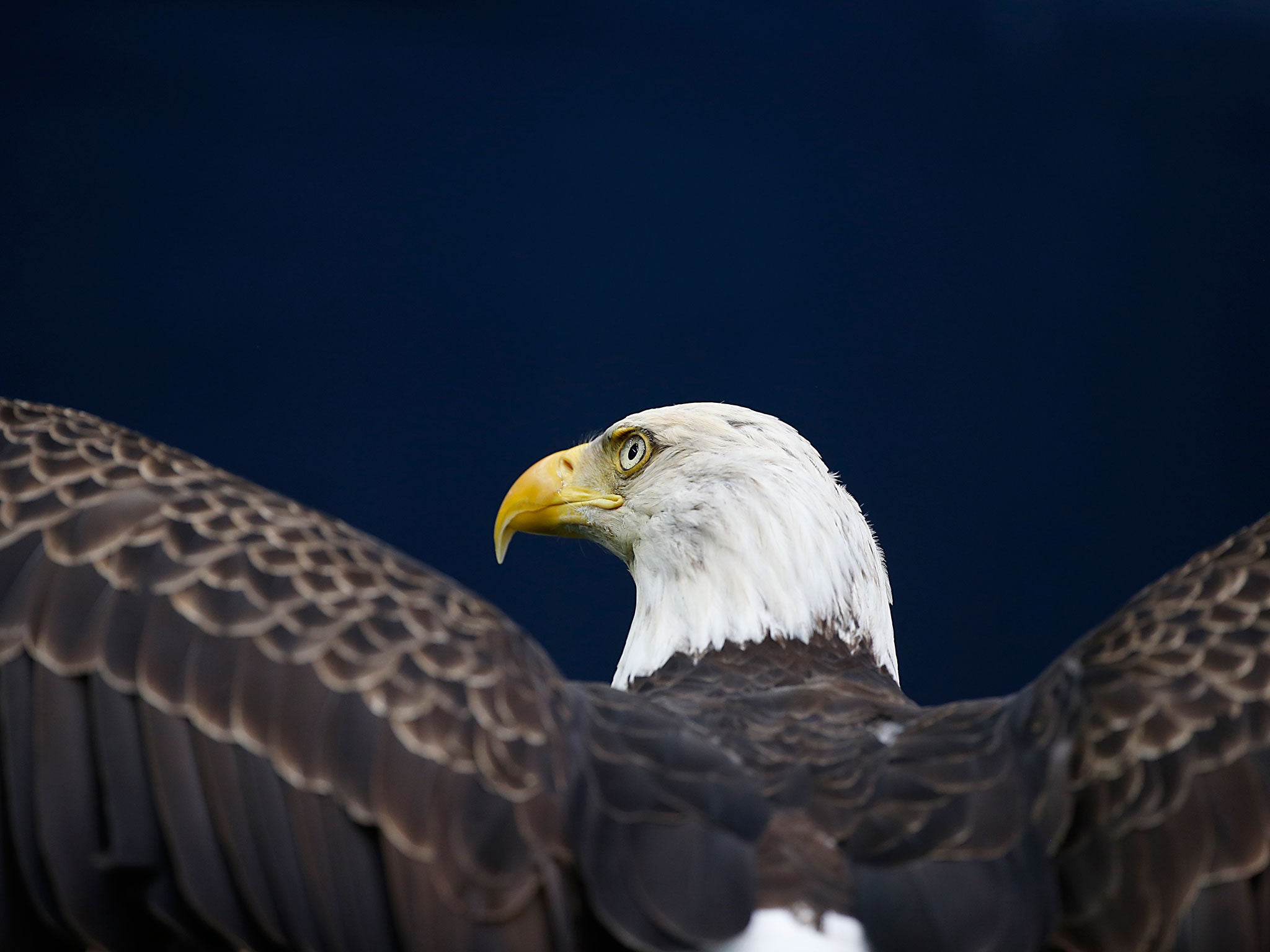Sightings of baby bald eagle in New York have birdwatchers in a flap
America's national symbol has not bred in the country's biggest city for 100 years but conservationists hope clean-up efforts mean that may be changing

The sighting of a young bald eagle in the skies over New York City has raised an exciting prospect for birdwatchers and conservationists: Has America’s most iconic species begun breeding again in the country's biggest, busiest city?
For years they disappeared from almost the entire state of New York.
Some reports suggest they haven't nested in the city itself for a century.
But now conservationists with the New York City Audobon - a wildlife protection society - say they have received multiple reports of an adult pair of bald eagles with offspring flying around Staten Island.
Local birders say they spotted the youngster sharing a branch with what appeared to be its parents. The infant was reportedly seen taking food from their mouths.
Debra Kriensky, a conservation biologist with the group, described their appearance as exciting but added that it also raised numerous questions. “It’s a little bit of a mystery,” she said.
Last year, she added, birdwatchers were excited to find a pair nesting on Staten Island but the attempt at breeding ultimately failed.

This year no nests have been detected. So where are they nesting?
“It’s possible that they are nesting in an area where they have not been found but it is also possible they nested across the river in New Jersey,” she said.
The Bald Eagle is an all-American bird, being the only eagle native to North America.

When it was adopted as the national symbol in 1782 there may have been as many as many as 100,000 nesting in the newly independent US, according to the Fish and Wildlife Service.
They have been in decline for much of the time since, suffering as forests were cut down and their prey - fish or small mammals - disappeared.
Even after they were made a protected species in 1940, they were hit hard by the use of the pesticide DDT.
Many more died after eating poisoned prey until by 1963 only 487 nesting pairs remained.
But today they are held up as a conservation success story. Their numbers bounced back after DDT was banned and now there are about 10,000 nesting pairs in the 48 contiguous states of the US.
New York’s population went the same way as the national picture. By 1960 there was only a single pair in the whole state, with none spotted in the polluted air of the city.
Since then sightings have increased. The species is spotted regularly in Queens and the Bronx, as well as Staten Island.
“It’s amazing whether they are nesting here or not just to see them in the city is exciting,” said Ms Kriensky.
“It seems certain they will breed here in the future if not now.”
Join our commenting forum
Join thought-provoking conversations, follow other Independent readers and see their replies
Comments
Bookmark popover
Removed from bookmarks